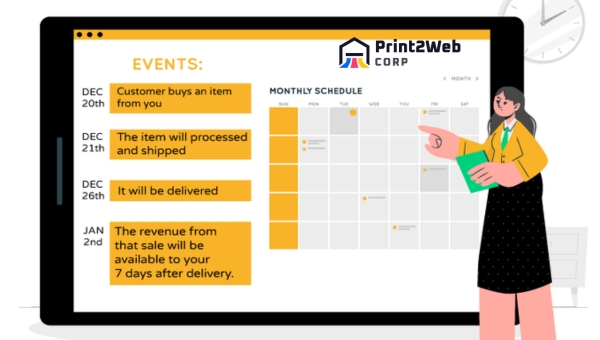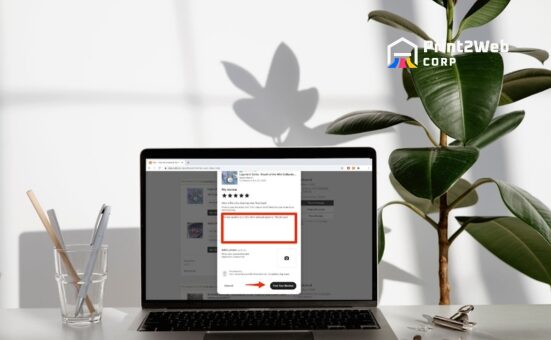Have you ever heard the term ‘Amazon Account Level Reserve’ and wondered what it meant? If you’re an Amazon seller, this term can be crucial to your business. I’m here to pull back the curtain and show you exactly what’s going on behind the scenes. When you dive into the world of online selling, words like “reserves” might make you nervous. But don’t worry – I’ll help make it all clear. So, stick around because we’re about to get right into the nitty-gritty of Account Level Reserves on Amazon.
If someone asks me, “What is Account Level Reserve Amazon?” In simple words, it’s a safety net that Amazon uses to cover its bases. Think of it like a security deposit; a part of your money is put aside for a while. Why does this happen? Well, if there are any issues with orders or returns from customers, that saved money helps sort things out without immediate trouble for anyone involved.
What This Article Offers:
- Clear explanation of Account Level Reserve on Amazon
- Reasons why reserves happen on seller accounts
- Tips for avoiding reserves and keeping your account safe
- Guidance on navigating through reserves if they do happen
What Is Amazon Account Level Reserve?
Account Level Reserve (ALR) is a protective financial strategy implemented by Amazon, aimed at managing risks associated with transactions conducted by sellers on its platform. Essentially, this reserve acts as a safety net, where a portion of the seller’s earnings is withheld and stored temporarily by Amazon.

This method is designed to cover any potential claims or chargebacks that may occur during the sale process. The specific terms, including the percentage of funds withheld and the duration for which they are kept in reserve, can vary based on factors such as the seller’s performance history and the perceived level of risk associated with their account.
The concept behind ALR is not only to safeguard consumer interests but also to ensure that merchants adhere to Amazon’s policies and standards. By holding back funds, Amazon aims to incentivize sellers to fulfill orders efficiently and handle customer disputes effectively.
Once the period set for the reserve elapses or when a seller demonstrates consistent compliance with Amazon’s policies, these funds are released back to them. Though seen as a necessary measure from Amazon’s perspective, it certainly requires sellers to plan their finances considering this withholding pattern so their business operations remain unaffected.
Also Read: Amazon A10 Algorithm: Unlock Sales & Boost Rankings
The Role of Amazon Account Level Reserves in Seller Protection
Account level reserves are particularly significant for sellers on platforms such as Amazon or eBay, where transactions occur at high volumes and speeds. Understanding how these reserves function can help sellers manage their finances more effectively and prepare for any unforeseen issues.
- Risk Mitigation: Reserves act as a safety net against potential financial risks associated with returns, disputes, and chargebacks. By holding a portion of the transaction amount for a set period, platforms ensure that there are funds available to cover any claims made by buyers without immediately impacting the seller’s cash flow significantly.
- Fraud Prevention: In an e-commerce environment where fraudulent activities can be commonplace, account-level reserves provide an additional layer of security. They deter fraudulent sellers since funds are not immediately accessible after sales are made. This delay allows platforms to verify transactions and ensure their legitimacy.
- Encouraging Best Practices: Sellers motivated to access their funds sooner must adhere to best practices including prompt shipping, accurate item descriptions, and excellent customer service. Platforms often adjust reserve levels based on performance metrics; thus, maintaining high standards can reduce reserve requirements over time.
- Financial Stability: For both the selling platform and its community of sellers, reserves contribute to overall financial stability. They ensure that even in cases where a dispute leads to a refund or compensation claim from the buyer’s side; such expenses can be covered without jeopardizing the operational capabilities of either party involved.
By appreciating the purpose behind account-level reserves and adapting their business practices accordingly, sellers can not only protect themselves but also enhance their reputation among buyers—leading to better sale outcomes and potentially lower reserve requirements.
Understanding Amazon Reserve Tiers
Amazon establishes reserve tiers for its merchants to strategically manage funds and mitigate risks associated with transactions. This system tends to safeguard both sellers and buyers by ensuring that potential disputes or chargebacks can be resolved without financial loss.

Different levels of reserves are applied based on a merchant’s performance, tenure, and transaction history with Amazon Pay. Here’s a breakdown of the various reserve tiers:
- Tier I: All new merchants on Amazon Pay begin in this initial phase:
- A hold is placed on 100% of payments processed during the past week, lasting for seven days after the transaction date.
- The amount related to any unresolved transaction disputes is also retained.
- Tier II: Merchants upgrade to this tier under certain conditions:
- Must have used Amazon Pay for at least one year and completed a minimum of 100 orders; or
- If within six months, complete at least 100 orders with an Order Defect Rate (ODR) below 1%.
- In this tier, Amazon holds an amount equaling either 3% of your daily processed payments averaged over the preceding 28 days or the total value of unresolved disputes—whichever is greater.
- Tier II-Plus: This level offers further benefits but requires sustained quality performance:
- Upon reaching Tier II standards while maintaining an ODR below 1% averaged over the past sixty days, you’re promoted.
- Only amounts associated with unresolved transaction disputes are retained.
- However, reverting to Tier II occurs if your ODR hits or exceeds the threshold of 1%.
Each tier represents evolving trust and reduced risk as perceived by Amazon based on a seller’s history and behavior. Moving up through these tiers not only reduces financial holds but reflects positively on your selling practices. Sellers must monitor their performance actively because changes in tiers can happen automatically based on criteria met or violated, particularly concerning ODR thresholds.
Also Read: eBay vs Amazon Showdown – Which Dominates for Sellers?
Challenges Faced by FBM Sellers Due to Account Level Reserve
Selling on Amazon is a thrilling endeavor, although it’s not without its challenges. Needless to say, when the unexpected Account Level Reserve arrives in your inbox, the stress can pile up rather quickly, especially if you’re an FBM (Fulfillment by Merchant) seller.
FBM sellers face unique challenges when it comes to dealing with an account-level reserve on Amazon. After all, they’re responsible for every step of order fulfillment, from storage and packaging to shipping and customer service. Here’s how the Account Level Reserve can disrupt their operations:
- Delayed Payments: The reserve essentially means that some or all of your earnings are temporarily withheld by Amazon. For smaller sellers who rely heavily on cash flow to source new products, this delay can put a significant strain on their business.
- Increased Operational Costs: The additional time and effort needed to understand and navigate around an account level reserve result in increased operational costs – something smaller businesses could do without.
- Risk Of Business Interruption: If there are insurmountable issues that remain unresolved regarding the account level reserve, it may lead to complete business interruption or even permanent suspension of your seller account on Amazon.
The above possible scenarios clearly highlight why staying vigilant against landing up with an account-level reserve is critical for FBM sellers. Each case may vary according to specific circumstances, of course, but even so, staying proactive rather than reactive will always stand you in good stead.
Also Read: How to Track Your Etsy Order Easily? – Ultimate Guide
Strategies for Managing and Reducing Reserves
In the world of Amazon selling, maintaining account reserves can indeed be a challenging task. Don’t let that worry you. There are strategies to prevent your account from falling into this trap. Here’s how you can do it.

Steps to Avoid Getting an Account Level Reserve
Prevention is always better than cure – let’s start with some proactive steps to avoid landing ourselves into an Account Level Reserve in Amazon.
- Maintain Performance Metrics: At the root of everything, it all comes down to this – keep your account performance at its peak. Promptly shipping orders, issuing quick refunds, and exhibiting excellent customer service contribute significantly towards high ratings.
- Monitor Your Sales Activity: I can’t emphasize enough this – always keep a close watch on your sales volume/activity. Noticing sudden spikes can prevent potential fraud or violations.
- Handle Returns Efficiently: Dealing with returns professionally helps gain customer trust and limits negative feedback.
- Stay Updated on Policies & Guidelines: Constant updates about Amazon’s policies are crucial. Comprehending & strictly adhering to these guidelines minimizes the chances of violations.
Sticking by these standards not only improves your chances of dodging an ALR but also enhances your selling experience & boosts customer satisfaction.
Addressing A-to-Z Guarantee Claims and Their Influence on Reserves
Amazon’s A-to-Z Guarantee claims can trigger an instant reserve, impacting sellers’ cash flow considerably if not addressed aptly.
A step-by-step guide for mitigating such circumstances:
- Prompt Response: Respond quickly to any claim lodged against you before Amazon jumps in.
- Take this as an opportunity for good customer service; they played their part by choosing us – now it’s our turn!
- Detailed Explanation For Rejections: You’ve got every right to reject claims; however, ensure they’re backed up with precise & detailed reasoning.
- Please give them a justified reason: we are not medieval jugglers; we’re passionate sellers.
- Follow Amazon’s Guidelines in your response to A-to-Z Guarantee claims.
Remember, handling claims with agility and maintaining high standards of customer service can prevent reserves and also build a reputable seller profile on Amazon. Now you’ve got the know-how for managing & reducing your Account Level Reserves efficiently – apply what you’ve learned, stay confident, and keep selling.
Also Read: How to Delete a Shopify Account & Cancel a Subscription?
FAQs
1. How does account-level reserve work on Amazon?
The Account Level Reserve (ALR) on Amazon is a system wherein a certain amount of funds in your seller account are held back to cover future problems, such as A-to-Z claims or chargebacks. This mechanism ensures that any issues which may arise will be promptly addressed.
2. What is Amazon’s base reserve policy?
The Amazon base reserve policy involves holding back either 3% of gross sales or $10,000, whichever is greater. The funds are used as a security measure to handle potential issues such as refunds or returns.
3. What are the two types of Amazon accounts?
Amazon provides two types of seller accounts: an Individual account and a Professional account. Individual accounts don’t have monthly fees but charge per item sold, while Professional Accounts come with monthly fees but offer more selling benefits and no per-item fee.
4. What is the ‘previous reserve amount balance’ in Amazon?
The ‘previous reserve amount balance’ on Amazon reflects the total monetary value held in your account from the previous period’s reserves to ensure coverage for potential customer refunds or claims.
Also Read: How to Promote Your Shopify Store: Expert Tips & Strategies
Conclusion
Understanding the Account Level Reserve Amazon system is paramount for every seller. It allows you to deal with payment holds adequately and work towards preventing them.
Keeping a commendable seller performance, complying with tax requirements, and efficiently handling A-to-Z Guarantee claims are crucial proactive measures to keep your Amazon account in good standing. With careful monitoring of your current reserve amount and the implementation of strong performance metrics, you can safeguard your business against potential risks.







